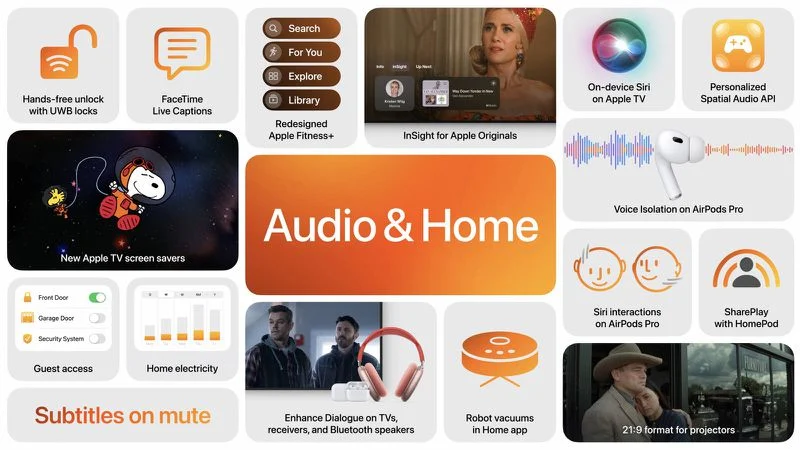Introduction
In today’s fast-paced world, the demand for smart home technologies is ever-growing. Homeowners seek convenience, security, and efficiency—all of which can be seamlessly integrated and managed through Apple’s HomeKit. At BB One Technologies, we specialize in creating cohesive and intuitive smart home systems. Let’s explore how HomeKit facilitates integrated control of various smart home devices, simplifying daily life and enhancing overall comfort and security.
What Are Integrated Control Systems?
Definition
Integrated control systems in the context of smart homes refer to platforms that allow centralized management of multiple devices. Instead of using separate apps or controls for each device, integrated systems like HomeKit provide a unified interface. This simplifies the management of your home’s lighting, climate, security, and entertainment systems.
Examples of Functionality
- Lighting: Control all the lights in your home from a single app, set schedules, and create ambiance with different lighting scenes.
- Climate: Manage your heating and cooling systems to maintain optimal comfort while conserving energy.
- Security: Monitor and control your home’s security systems, including cameras, door locks, and motion detectors, from anywhere.
- Entertainment: Seamlessly integrate your TV and audio systems to enhance your media experience.
- Energy: Use smart outlets and monitor Grid Forecasts in your area to reduce carbon emissions and utilize cleaner energy sources.
Benefits of Using HomeKit for Integrated Control
Centralized Management
HomeKit stands out by offering centralized control over all compatible devices through the Home app on iOS devices. This unified control system eliminates the need for multiple apps and interfaces, streamlining the management of your smart home.
Convenience
With HomeKit, convenience is at your fingertips. Users can create scenes and automations that control multiple devices simultaneously with a single command. For instance, a “Good Night” scene can turn off the lights, lower the thermostat, and lock the doors, all at once.
Compatibility
HomeKit is compatible with a wide range of devices from various manufacturers, making it a versatile choice for any smart home setup. This compatibility ensures that homeowners can mix and match devices from different brands while maintaining seamless control through HomeKit.
Security
Apple prioritizes privacy and security, and HomeKit is no exception. The platform uses end-to-end encryption for data transmission, ensuring that your personal information and home activities are secure.

Setting Up and Using HomeKit for Integrated Control
Step 1: Installing and Setting Up Devices
Start by adding HomeKit-compatible devices to your setup. This process is user-friendly:
- Scan the HomeKit code on the device or its packaging with the Home app.
- Follow the prompts to add the device to your home setup.
- Example Devices: Lutron lights, Ecobee thermostats, Sonos speakers, Apple TV, and Yale smart locks are popular choices that integrate seamlessly with the Apple Home ecosystem.
Step 2: Creating Scenes and Automations
Once your devices are set up, you can create scenes and automations:
- Scenes: Combine multiple actions into a single command. For example, a “Morning” scene could turn on the lights, adjust the thermostat to a comfortable level, and start your favorite music playlist.
- Automations: Set devices to operate automatically based on time, location, or sensor triggers. For instance, your porch light can automatically turn on at sunset.
Step 3: Using Siri for Voice Control
With Siri, you can control your HomeKit-enabled devices using voice commands:
- Example Commands: “Hey Siri, turn off the living room lights,” or “Hey Siri, set the thermostat to 72 degrees.”
- Siri integration makes it easy to manage your home without lifting a finger.
Practical Applications of Integrated Control with HomeKit
Lighting and Climate Control
HomeKit enables precise control over lighting and climate settings, enhancing comfort and energy efficiency:
- Automate Lighting: Set your lights to match circadian rhythms, simulating a natural sunrise in the morning to help you wake up more naturally.
- Optimize Climate: Automatically adjust your thermostat based on your schedule to ensure your home is always at the perfect temperature when you arrive.
Security Systems
Enhance your home’s security with integrated control over cameras, locks, and sensors:
- Remote Monitoring: View live feeds from your security cameras and receive notifications about any unusual activity.
- Smart Locks: Control and monitor door locks from anywhere, providing access to guests or service providers even when you’re not home.
Media and Entertainment
HomeKit’s integration extends to media and entertainment systems, offering streamlined control:
- Media Control: Use HomeKit to turn on your TV and set up your audio system for a movie night with a single command.
- Music and Ambiance: Set the perfect ambiance by integrating lighting and audio into your scenes, like dimming the lights and playing soft music for a romantic dinner.
- Multi-Room Audio: Control your audio across every room, group your speakers, or move your audio from one room to another.

Conclusion
The Benefits of Apple Home Ecosystem
HomeKit’s integrated control system revolutionizes the way we manage our homes. By offering a centralized, secure, and easy-to-use platform, it allows homeowners to fine-tune their systems without needing extensive technical knowledge. HomeKit simplifies smart home management, making it accessible for everyone.
How BB One Technologies Can Help
At BB One Technologies, we specialize in setting up Apple Home systems for seamless integrated control. It always starts with a quick, robust, and reliable network that can manage an ever-growing number of devices. Whether you need assistance with installing devices, creating customized scenes, or setting up automations, our experts are here to help you every step of the way.
Ready to transform your home into a smart, integrated haven? Contact us today for a consultation and let us help you unlock the full potential of HomeKit.


